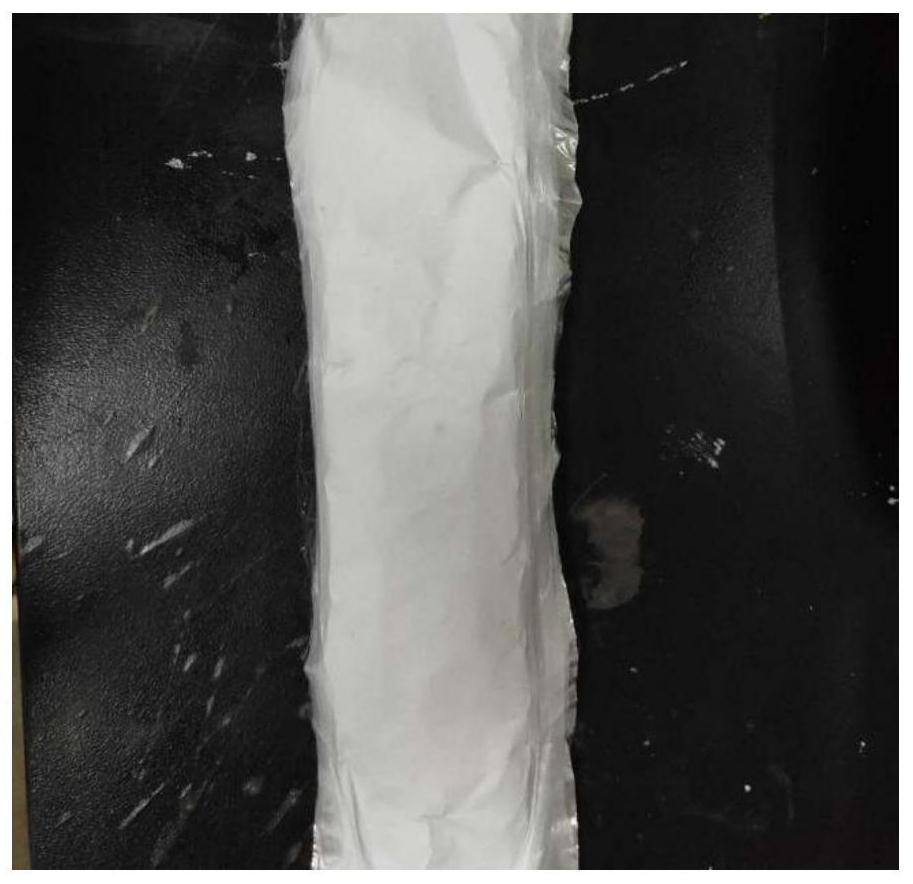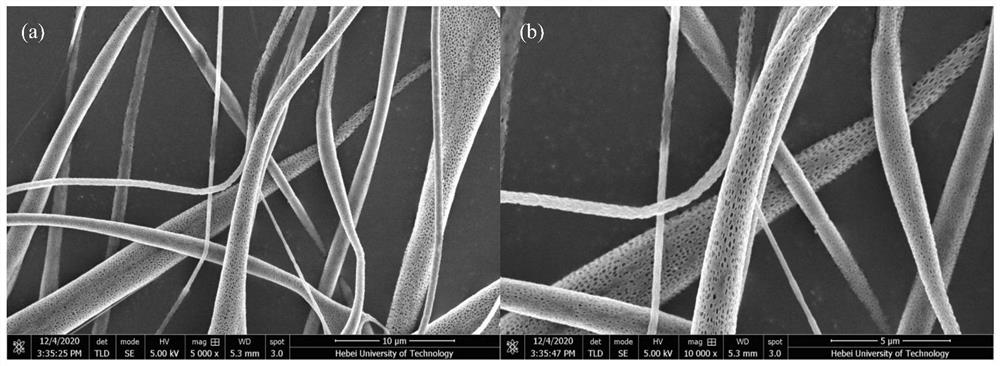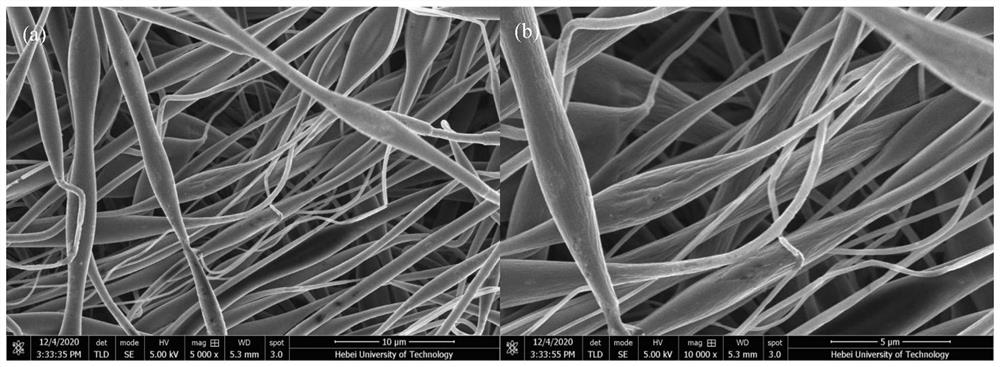Electrostatic spinning preparation method of porous polylactic acid fiber oil absorption material
A technology of polylactic acid fiber and oil-absorbing material, which is applied in the directions of electrospinning, separation method, fiber processing, etc., can solve the problems of low porosity, unusable oil absorption, low oil absorption capacity, etc., and achieve the effect of enhancing toughness
- Summary
- Abstract
- Description
- Claims
- Application Information
AI Technical Summary
Problems solved by technology
Method used
Image
Examples
Embodiment 1
[0031] PLA was selected as the matrix material, and the reaction conditions were regulated by the control variable method to prepare the PLA fiber oil-absorbing material with a suitable solvent ratio. The specific steps are: weigh 2.0000g of PLA pellets, dissolve it in 13.3mL of dichloromethane, and carry out magnetic stirring at room temperature for 1.5h. mL of acetone (acetone is added for phase separation with the good solvent during the spinning process, and at the same time, it can avoid needle blockage caused by too fast volatilization rate of methylene chloride), wherein acetone is added in 7 times, each time About 1mL, starting from the addition of acetone at intervals of 10min, the total time of stirring is 1.5h), and finally mixing evenly to obtain a solution, which is ready for spinning; the total of dichloromethane and acetone solution is 20mL. Put the freshly prepared solution into the syringe, and the air bubbles need to be driven out during this process.
[003...
Embodiment 2
[0035] Other steps are the same as in Example 1, except that 13.3mL of dichloromethane is replaced by 10mL of dichloromethane, and 6.7mL of acetone is replaced by 10mL of acetone, wherein the acetone is added in 10 times, 1mL each time, with an interval of 10min each time, under this condition The obtained spun fiber is the fiber with the dichloromethane and acetone ratio of 1:1.
[0036] The prepared oil-absorbing material was tested for oil absorption, and the oil absorption rate was calculated. image 3 a is the SEM image of the fiber surface at 1:1; from image 3 It can be seen from the fiber enlarged picture of b that when the ratio of good solvent to poor solvent is 1:1, the surface of the nanofiber fails to form a pore structure, indicating that although the volatilization rate and volatilization temperature of the good solvent and the poor solvent are different, the good solvent When the ratio of the solvent to the poor solvent is 1:1, the pore structure cannot be for...
Embodiment 3
[0038] Other steps are the same as in Example 1, except that 13.3mL of dichloromethane is replaced by 15mL of dichloromethane, and 6.7mL of acetone is replaced by 5mL of acetone, wherein the acetone is added in 5 times, each 1mL, each interval of 10min, under this condition The obtained spun fiber is the fiber with the ratio of dichloromethane and acetone at 3:1.
[0039] The prepared oil-absorbing material was tested for oil absorption, and the oil absorption rate was calculated. Figure 4 a is the SEM image of the fiber surface at 3:1; from Figure 4 It can be seen from the fiber enlarged picture of b that when the ratio of good solvent to poor solvent is 3:1, the surface of the nanofiber fails to form a pore structure, indicating that although the good solvent and the poor solvent have different volatilization rates and volatilization temperatures, the good solvent and the bad solvent When the solvent ratio is not appropriate, the pore structure may not necessarily be form...
PUM
| Property | Measurement | Unit |
|---|---|---|
| oil absorption | aaaaa | aaaaa |
| oil absorption | aaaaa | aaaaa |
| boiling point | aaaaa | aaaaa |
Abstract
Description
Claims
Application Information
 Login to View More
Login to View More - R&D
- Intellectual Property
- Life Sciences
- Materials
- Tech Scout
- Unparalleled Data Quality
- Higher Quality Content
- 60% Fewer Hallucinations
Browse by: Latest US Patents, China's latest patents, Technical Efficacy Thesaurus, Application Domain, Technology Topic, Popular Technical Reports.
© 2025 PatSnap. All rights reserved.Legal|Privacy policy|Modern Slavery Act Transparency Statement|Sitemap|About US| Contact US: help@patsnap.com



